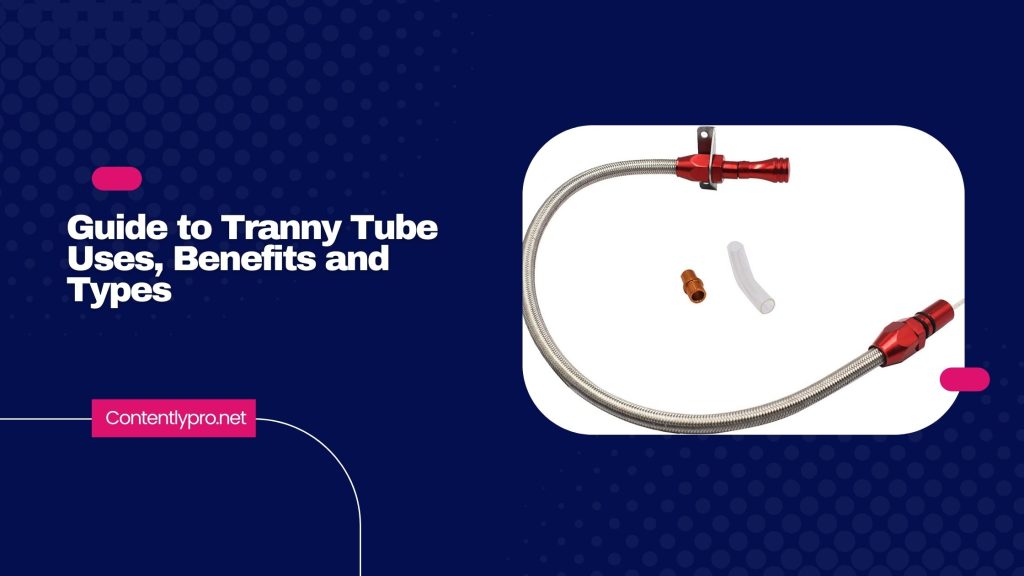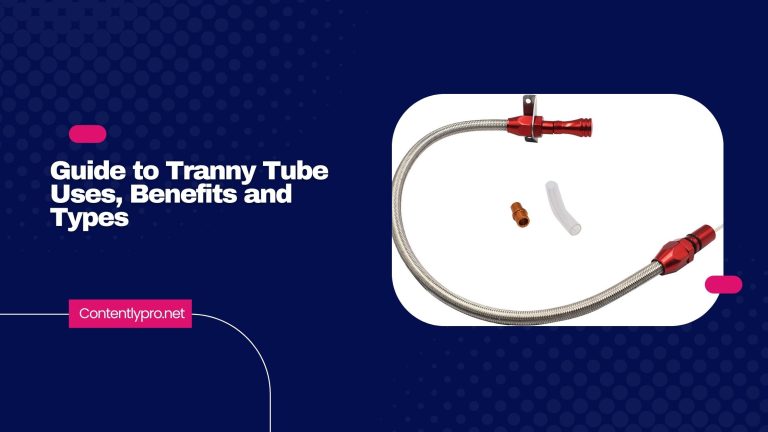Managing the temperature and fluid flow within a vehicle’s transmission system is an essential angle of guaranteeing smooth operations and life span. At the heart of this regulation lies the frequently neglected however crucial component: the transmission tube, commonly known as the transmission cooler line or tranny tube.
Serving as a conduit between the transmission and the vital cooling device, this modest metal or hose structure plays a significant part in maintaining optimal transmission temperatures and shielding against overheating. In this article, we are digging into its functions, types, and benefits to unwind its significance in protecting the health and performance of a vehicle’s transmission system.
What is Tranny Tube?
A tranny tube is a component of the car that helps direct the transmission fluid’s temperature by facilitating its flow to and from the transmission cooler, which helps in cooling the transmission fluid. The transmission tube is often referred to as the transmission cooler line. Trany tube plays a vital part in keeping up the ideal working temperature of a vehicle’s transmission framework. It’s a metal tube or hose that interfaces the transmission to the transmission cooler, which is usually coordinated into the radiator or found externally.
Uses of Tranny Tubes
The following are the uses of the tranny tubes:
● Temperature Regulation:
Transmission fluid makes a difference in greasing up and cooling the transmission framework. The tranny tube encourages the stream of this liquid to and from the transmission cooler. As the liquid circulates through the transmission, it retains warmth created by grinding and movement. The tube at that point coordinates this warmed liquid to the cooler where it disseminates an abundance of heat, guaranteeing that the transmission works inside the perfect temperature range.
● Liquid Circulation:
The tranny tube also helps in keeping up a non-stop stream of transmission liquid. Proper liquid circulation is vital for guaranteeing smooth equip shifts, diminishing wear and tear, and amplifying the life expectancy of transmission components.
● Assurance Against Overheating:
By controlling the temperature, the trany tube helps prevent overheating of the transmission system. Overheating can lead to a liquid breakdown, expanded friction, and possible harm to transmission components. As a result, the tube by implication contributes to the general life span and execution of the transmission.
Types of Trany Tubes:
Trany tubes can vary in material, plan, and setup based on the vehicle’s make and show. A few common types include:
● Metal Tubes:
Traditionally, tranny tubes were made of metal, ordinarily steel or aluminum. These tubes offer toughness and versatility against high temperatures and weight but may be vulnerable to erosion over time. These are the best tranny tubes.
● Elastic or Manufactured Tubes:
Newer vehicles might utilize adaptable elastic or manufactured tubes for transmission fluid circulation. These trany tubes are more adaptable, which can rearrange establishment and routing. In any case, they may not offer the same toughness as metal tubes.
● High-Performance Tubes:
In high-performance vehicles or vehicles utilized for towing, aftermarket transmission tubes with upgraded cooling capabilities might be introduced. These tranny tubes are outlined to handle higher warm loads and keep up way better transmission fluid temperatures beneath extraordinary conditions.
Benefits of a Well-Functioning Tranny Tube:
● Enhanced Transmission Life Expectancy:
By controlling temperature and guaranteeing legitimate fluid circulation, a tranny tube can contribute to the life span of the transmission system.
● Improved Performance:
Ideal transmission temperature guarantees smooth equipment shifts and in general superior performance of the vehicle.
● Anticipation of Costly Repairs:
Dodging overheating and keeping up appropriate liquid circulation can anticipate harm to transmission components, sparing critical repair costs in the long run.
● Maintenance and Care:
Regular maintenance of a trany tube including inspections for spills, erosion, or harm, is vital. Any signs of wear or weakening ought to be tended to instantly to avoid potential transmission issues.
Conclusion:
In conclusion, the tranny tube is a vital component of a vehicle’s transmission system. It plays an essential part in temperature direction and liquid circulation. Its appropriate working is fundamental for the life span and ideal performance of the transmission. Regular inspection and maintenance are essential to guarantee its adequacy and anticipate potential transmission issues.









